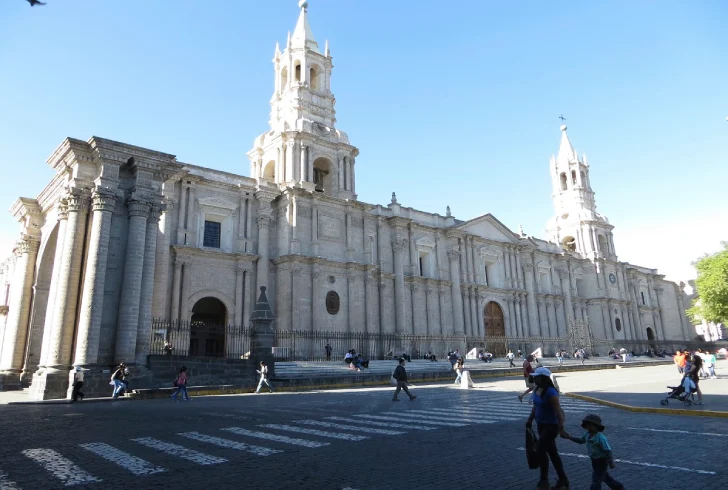Arequipa
Arequipa is an example of the Spanish and mestizo culture developed in Peru. There are no Inca artifacts or ruins in the city.
In the winter it is drier than in the summer. It is nicknamed the ‘white city’ (la Ciudad Blanca, in Spanish), because many of the buildings in the area are built of sillar, a white stone. This rock was quarried from the many volcanoes that surround the city, including the towering El Misti. Another theory which is commonly believed by the local population is that the name ‘white city’ came about because it was built by Spanish immigrants from the Basque Country who had pale skin and blonde hair. New Urban and archeological discoveries have shown that the frontage of houses was painted in different colors. The remaining examples can be found in the ‘Casa Tristan del Pozo’, the town center. Ask for local help to identify Misti, Chachani and Pichu Pichu, the three volcanoes surrounding the city.
Arequipa embodies a rich mix of indigenous and Spanish colonial cultures. With 478 years of history since its founding, examples of Spanish colonial architecture can be found throughout the center of the city and several surrounding districts. UNESCO has declared it a Human Heritage site. Catholic churches are scattered throughout the center of the city. Some ancient houses have been refurbished by the local authorities and serve as living museums. An example of this is the so-called «Tambos» located at Puente Bolognesi street.
Cultural
Peru is a culture dream destination. In a country where Quechua, Aymara, Amazonian, Afro-Peruvian, European, and many more separate cultural identities exist, Peru’s diversity is something you’ll notice straight away. Combined with its rich history, this diversity has given Peru some of the best cultural attractions in the world.
Nature Walks
Explore the rainforest walking outdoors on a trail, or off the trail, for recreational purposes and to look for wildlife along with your experienced guides who will look for the most reclusive and rare creatures that can be seen in the rainforest, the guides will also explain further about the medicinal plants that are very useful in the local culture, These hikes can be planned on flat or hilly terrain so before to go ahead with it. Your guides will offer an introductory speech that can better describe the conditions of the trails in advance and what would be advisable to wear for certain activities.
Our nature walks are specially developed hiking trail or footpath that runs through the primary rainforest that offers good possibilities to observe the local fauna, which there are marked stations or stops next to points of fauna and flora interest.



